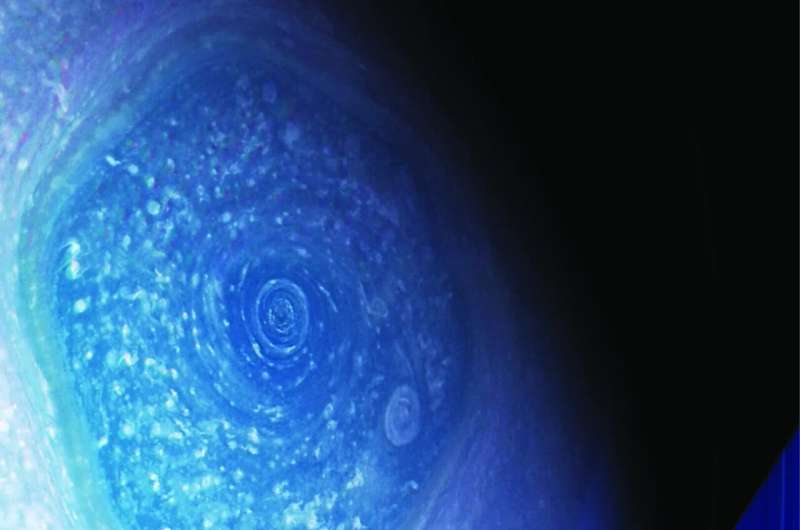
October 9, 2024 by JoAnna Wendel, American Geophysical Union
Collected at: https://phys.org/news/2024-10-polar-jet-stream-reveal-saturn.html
A hexagon-shaped atmospheric phenomenon first spotted on Saturn by Voyager 1 and Voyager 2 has intrigued scientists since the 1980s. More recently, NASA’s Cassini mission has periodically observed the hexagon and its embedded strong eastward jet that rotates at 120 meters per second. Scientists believe that the persistence of the hexagon could put to rest the oft-debated question of the length of Saturn’s rotational period.
The study is published in the journal Geophysical Research Letters.
The researchers have presented an estimate (in Earth hours) of the length of Saturn’s day based on data from Cassini and ground-based images. They tracked the movement of Saturn’s hexagon for 5.5 years and found that despite large radiative forcing in Saturn’s atmosphere, the rotation of the hexagon remained constant.
These findings suggest that the hexagon is deeply rooted within Saturn’s atmosphere and that its rotational period could reveal the rotational period of Saturn’s internal solid body, which the authors estimate as 10 hours, 39 minutes, and 23.01 ± 0.01 seconds.
More information: A. Sánchez‐Lavega et al, The long‐term steady motion of Saturn’s hexagon and the stability of its enclosed jet stream under seasonal changes, Geophysical Research Letters (2014). DOI: 10.1002/2013GL059078
Journal information: Geophysical Research Letters

Leave a Reply